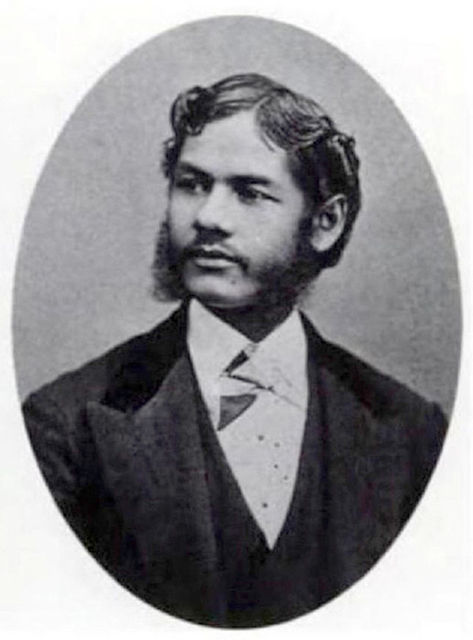Andreas Avelino Montano (1847-1913) — an early photographer of Hawaii — was born in Colombia, South America, from which he was banished in 1864 for having participated in a failed rebellion against the government. After having spent some time in
Andreas Avelino Montano (1847-1913) — an early photographer of Hawaii — was born in Colombia, South America, from which he was banished in 1864 for having participated in a failed rebellion against the government.
After having spent some time in California, he arrived at Honolulu in 1870, opened a studio called Hale Paikii (“photographer’s house”) on the upper floor of a building at 87 Fort St., and became Queen Emma’s official photographer.
Other alii he photographed included Princess Miriam Likelike, King David Kalakaua, Queen Kapiolani and Virginia Kapooloku Poomaikelani, the sister of Queen Kapiolani.
He also photographed numerous scenes on Oahu, such as men fishing in Honolulu Bay, Iolani Palace, the Queen’s Hospital grounds, ships docked and anchored at Honolulu Harbor, Chinese cultivating and harvesting rice, and a group of Hawaiian school children.
In 1881, Montano travelled to Kauai, where he produced a number of outstanding photographs.
Among them were panoramic pictures of Hanalei Bay and Hanalei Valley; others were taken at Hale Nani, William Hyde Rice’s estate in Lihue, once situated alongside what is today Rice Street from Waa Street to Kalena Street.
His pictures of the Kauai countryside captured scenes of rural life, one of which was of a Native Hawaiian family at dinner in front of their grass house.
When the family declined Montano’s request to take their picture, Montano informed them he would take a picture of a distant view in the opposite direction instead.
Since these backcountry people had no idea of which end of the camera produced a photo, Montano pretended to photograph the far off scene, while actually taking their picture.
By this little ruse, he succeeded in preserving their repast for posterity on film.
Montano also introduced the process of retouching photographs to Hawaii.
Later, he became the owner of the Kaaipu Diary in Manoa Valley.
Tragically, for eight years prior to his death, he was confined to his bed, a victim of internal paralysis.


